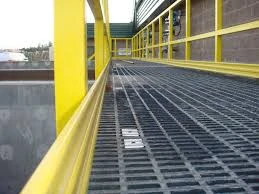
-
 Afrikaans
Afrikaans -
 Albanian
Albanian -
 Amharic
Amharic -
 Arabic
Arabic -
 Armenian
Armenian -
 Azerbaijani
Azerbaijani -
 Basque
Basque -
 Belarusian
Belarusian -
 Bengali
Bengali -
 Bosnian
Bosnian -
 Bulgarian
Bulgarian -
 Catalan
Catalan -
 Cebuano
Cebuano -
 China
China -
 China (Taiwan)
China (Taiwan) -
 Corsican
Corsican -
 Croatian
Croatian -
 Czech
Czech -
 Danish
Danish -
 Dutch
Dutch -
 English
English -
 Esperanto
Esperanto -
 Estonian
Estonian -
 Finnish
Finnish -
 French
French -
 Frisian
Frisian -
 Galician
Galician -
 Georgian
Georgian -
 German
German -
 Greek
Greek -
 Gujarati
Gujarati -
 Haitian Creole
Haitian Creole -
 hausa
hausa -
 hawaiian
hawaiian -
 Hebrew
Hebrew -
 Hindi
Hindi -
 Miao
Miao -
 Hungarian
Hungarian -
 Icelandic
Icelandic -
 igbo
igbo -
 Indonesian
Indonesian -
 irish
irish -
 Italian
Italian -
 Japanese
Japanese -
 Javanese
Javanese -
 Kannada
Kannada -
 kazakh
kazakh -
 Khmer
Khmer -
 Rwandese
Rwandese -
 Korean
Korean -
 Kurdish
Kurdish -
 Kyrgyz
Kyrgyz -
 Lao
Lao -
 Latin
Latin -
 Latvian
Latvian -
 Lithuanian
Lithuanian -
 Luxembourgish
Luxembourgish -
 Macedonian
Macedonian -
 Malgashi
Malgashi -
 Malay
Malay -
 Malayalam
Malayalam -
 Maltese
Maltese -
 Maori
Maori -
 Marathi
Marathi -
 Mongolian
Mongolian -
 Myanmar
Myanmar -
 Nepali
Nepali -
 Norwegian
Norwegian -
 Norwegian
Norwegian -
 Occitan
Occitan -
 Pashto
Pashto -
 Persian
Persian -
 Polish
Polish -
 Portuguese
Portuguese -
 Punjabi
Punjabi -
 Romanian
Romanian -
 Russian
Russian -
 Samoan
Samoan -
 Scottish Gaelic
Scottish Gaelic -
 Serbian
Serbian -
 Sesotho
Sesotho -
 Shona
Shona -
 Sindhi
Sindhi -
 Sinhala
Sinhala -
 Slovak
Slovak -
 Slovenian
Slovenian -
 Somali
Somali -
 Spanish
Spanish -
 Sundanese
Sundanese -
 Swahili
Swahili -
 Swedish
Swedish -
 Tagalog
Tagalog -
 Tajik
Tajik -
 Tamil
Tamil -
 Tatar
Tatar -
 Telugu
Telugu -
 Thai
Thai -
 Turkish
Turkish -
 Turkmen
Turkmen -
 Ukrainian
Ukrainian -
 Urdu
Urdu -
 Uighur
Uighur -
 Uzbek
Uzbek -
 Vietnamese
Vietnamese -
 Welsh
Welsh -
 Bantu
Bantu -
 Yiddish
Yiddish -
 Yoruba
Yoruba -
 Zulu
Zulu
reinforced plastic pipe
The Advantages of Reinforced Plastic Pipe in Modern Infrastructure
In recent years, the use of reinforced plastic pipes has gained significant traction in various industries, particularly in construction, agriculture, and water management. These pipes, known for their strength, durability, and lightweight characteristics, are transforming how we approach plumbing and infrastructure projects.
Reinforced plastic pipes are typically made from composite materials that combine plastic with fibers or other reinforcing agents. This process enhances the mechanical properties of plastic, making it stronger and more resistant to environmental stresses. Unlike traditional materials such as steel or concrete, reinforced plastic pipes are resistant to corrosion, which is a major advantage in environments where exposure to chemicals and moisture is constant.
One of the most noteworthy benefits of reinforced plastic pipes is their longevity. These pipes can last for several decades without significant wear, reducing the need for frequent replacements and extensive maintenance. This aspect is particularly advantageous in large-scale infrastructure projects where downtime can lead to substantial financial losses. By selecting reinforced plastic pipes, project managers can ensure that their systems remain operational longer, thereby optimizing resource allocation and minimizing disruption.
Furthermore, the lightweight nature of reinforced plastic pipes makes them easier to transport and install
. Traditional metal or concrete pipes can be cumbersome and require heavy machinery for installation. In contrast, reinforced plastic pipes can often be handled by smaller teams using basic lifting equipment, leading to reduced labor costs and accelerated project timelines. This ease of installation is especially beneficial in remote locations where access is limited.reinforced plastic pipe

Another crucial consideration is the environmental impact. Reinforced plastic pipes are manufactured using processes that can be more energy-efficient compared to metals. Additionally, the longevity and durability of these pipes contribute to sustainability by reducing waste associated with frequent replacements. Some manufacturers even produce reinforced plastic pipes from recycled materials, further enhancing their eco-friendly profile.
Applications for reinforced plastic pipes are vast and varied. They are commonly used in stormwater management systems, sewer lines, agricultural irrigation, and even in producing potable water systems. Their resistance to both pressure and temperature variations makes them suitable for handling a wide range of fluids, including aggressive chemicals, which expands their applicability across different sectors.
However, despite their numerous advantages, it is essential to consider factors such as temperature and pressure ratings when choosing reinforced plastic pipes for specific applications. Engineers and contractors must evaluate the specific needs of each project to ensure the selected materials will perform effectively under expected conditions.
In conclusion, reinforced plastic pipes offer numerous benefits that enhance modern infrastructure's efficiency and sustainability. Their durability, lightweight design, and corrosion resistance position them as a preferred choice in many applications. As industries continue to embrace innovative materials to address challenges, the role of reinforced plastic pipes is likely to grow, paving the way for a more sustainable and efficient future in construction and utility management.









